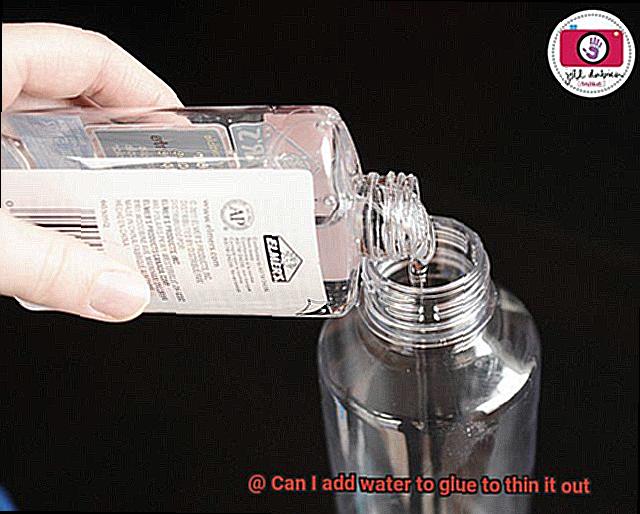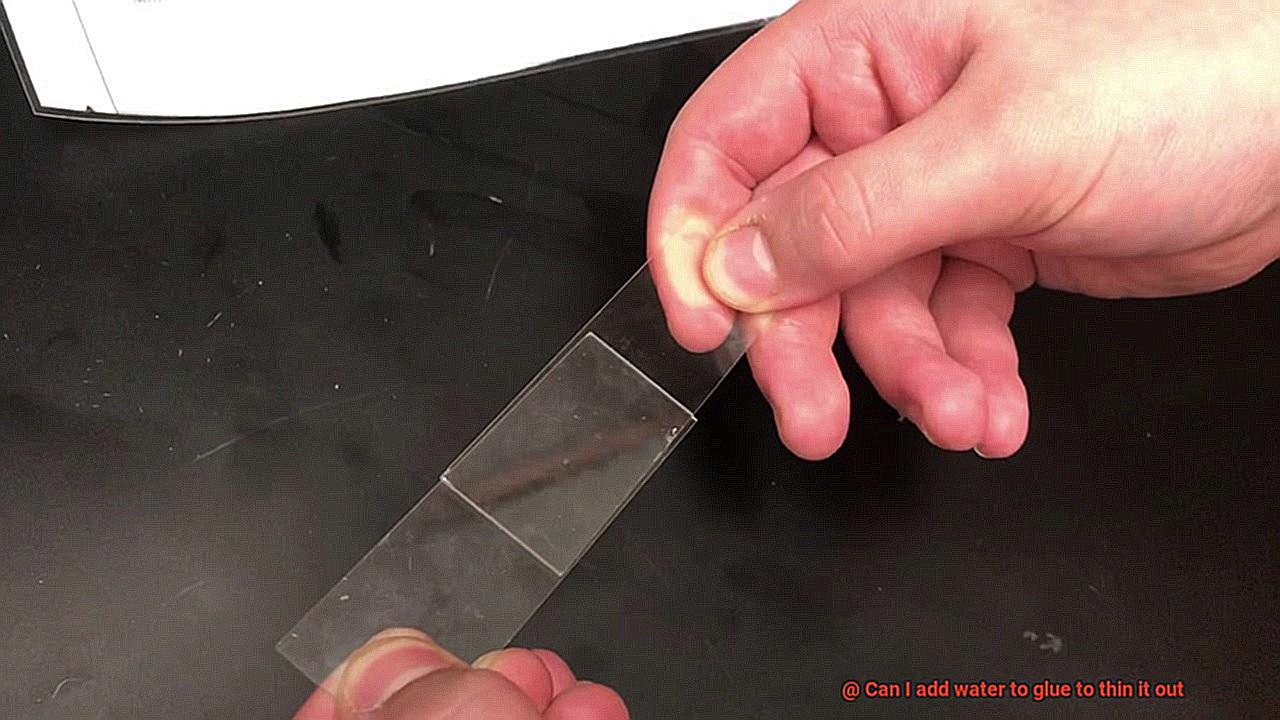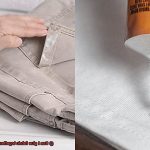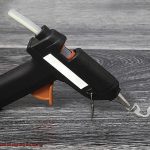Glue is a lifesaver when it comes to fixing things around the house or creating art projects. But what happens when your glue is too thick and won’t spread evenly? You might be tempted to add water to thin it out, but before you do, let’s take a closer look at whether this solution actually works.
Adding water to glue can be a quick fix for some types of glue, but not all. The success of this technique depends on the chemical composition of the glue itself. Some glues, like wood glue and PVA glue, can be thinned out with water without affecting their bonding strength. However, others like superglue and epoxy are not water-soluble and will not react well to added water.
If you’re still determined to add water to your glue, there are some important factors to consider. First, make sure you use distilled water instead of tap water as tap water contains minerals that can affect the consistency of the glue. Second, only add small amounts of water at a time and mix thoroughly until you reach your desired consistency.
In this blog post, we’ll explore the science behind different types of glue and how they react to added water. Whether you’re a DIY enthusiast or just curious about the world of adhesives, this post will provide insightful information that will help you achieve optimal results every time. So grab your favorite adhesive and let’s dive into the fascinating world of glue.
What Types of Glue Can Be Thinned Out with Water?
Contents
- 1 What Types of Glue Can Be Thinned Out with Water?
- 2 How Much Water Should I Add to Glue?
- 3 What Are the Risks of Adding Too Much Water?
- 4 How Do I Know If I Have Added Enough Water?
- 5 Does Every Type of Glue Require Different Instructions for Thinning?
- 6 Tips for Working with Thinned-Out Glue
- 7 Alternatives to Adding Water to Thin Out Glue
- 8 Conclusion
Adding water can be a simple solution, but not all types of glue can be thinned out successfully. Here are some types of glue that can be thinned out with water:
PVA (polyvinyl acetate) Glue
This type of glue is commonly used in many household projects. It is water-soluble, which means it can be easily thinned out with water. Many PVA glues come with instructions on how to thin them out properly. However, adding too much water can weaken the bond strength of the glue. So, it’s important to add small amounts of water at a time and mix well until you reach the desired consistency.

White Craft Glue
Another type of glue that is water-soluble and can be thinned out with water is white craft glue. It’s great for paper and wood projects, and it can be easily thinned out to make it easier to spread or brush onto surfaces. But just like PVA glue, adding too much water can also weaken its bond strength. So, it’s important to add small amounts of water gradually and mix well until you achieve the right consistency.
School Glue or Washable Glue
This type of glue is commonly used in classrooms and by children for various projects due to its washable feature. It is also easily thinned out with water, making it ideal for younger kids who might need help with spreading the glue.
However, not all types of glue can be thinned out with water. Superglue or cyanoacrylate glue sets quickly and forms a strong bond, making it difficult to thin out once applied. Adding water to superglue can actually cause it to harden prematurely and weaken the bond strength.
Similarly, epoxy glue is not meant to be thinned out with water. Epoxy is a two-part adhesive that needs to be mixed together in specific proportions for it to work properly. Adding water can throw off this delicate balance and render the epoxy useless.
In conclusion, PVA glue, white craft glue, and school glue are some types of glue that can be safely thinned out with water. However, it’s essential to check the label or manufacturer’s instructions before attempting to thin out any type of glue, as not all glues can be thinned out with water. Also, adding too much water can weaken the bond strength and make it difficult to work with. Therefore, add small amounts of water gradually and mix well until you reach the desired consistency.
How Much Water Should I Add to Glue?
If you’re working on a craft project and need to thin out your glue, adding water can be a quick solution. However, it’s important to add the right amount of water to avoid weakening the glue’s bond strength. Don’t worry, as an expert on this topic, I’ve done some research to help you achieve the perfect consistency for your glue.
Let’s start with white glue or school glue. To avoid making the glue too thin, it’s recommended to add no more than 10% water. This means that for every 100 ml of glue, you can add up to 10 ml of water. Remember, adding too much water can cause the glue to lose its adhesive properties and become runny. So, to achieve that desired consistency, add small amounts of water at a time and mix thoroughly before adding more.
Moving on to wood glue or PVA glue, you can add up to 5% water. Again, it is crucial to add small amounts at a time and mix thoroughly before adding more. Adding too much water can weaken the bond and affect the strength of the joint. So, take it slow and steady when adding water to this type of glue.
It’s worth noting that not all types of glue can be thinned with water. Superglue or cyanoacrylate glue should not be thinned with water as it can cause it to harden too quickly or not adhere properly.
In summary, when it comes to adding water to glue, the amount added will depend on the type of glue and your desired consistency. Add small amounts at a time and mix thoroughly before adding more to avoid making the glue too thin or affecting its adhesive properties. Remember that different types of glue require different water ratios, so always consult the manufacturer’s recommendations.
What Are the Risks of Adding Too Much Water?
Today, we’re delving into the world of glue and exploring the risks of adding too much water to it. As an expert on this topic, I’ve gathered some research that sheds light on why this popular technique has its downsides.
Firstly, adding too much water to your glue can weaken its adhesive properties. This means that the bond between your materials may not be as strong as it would have been if you hadn’t thinned out the glue. It’s a risk you don’t want to take if you’re aiming for a long-lasting and secure bond.
Another significant risk of adding too much water is that it can cause the glue to dry too quickly. This can lead to a weaker bond between your materials and a messy application process. You don’t want your project to fall apart in your hands or be left with a sticky mess.
Moreover, over-thinning the glue can result in it becoming too runny or thin. This makes it challenging to apply the glue evenly, causing an uneven bond between your materials. The last thing anyone wants is a lumpy or bumpy finished product.
Lastly, adding excessive amounts of water to colored or textured glues can cause them to lose their color or texture. Imagine carefully selecting the perfect glitter glue for your project, only to have it diluted and ruined by adding too much water. It’s a crafting nightmare.
How Do I Know If I Have Added Enough Water?
As an expert in the field, I can guide you through the process. Adding too much or too little water can impact the strength and effectiveness of your glue, so it’s crucial to know the right amount.
Different types of glue require different amounts of water to thin them out. White glue, for instance, will need more water than super glue. Once you determine the type of glue you’re using, there are a few ways to test if you’ve added enough water.
One method is to check the consistency of the glue. The glue should be thin enough to spread easily but still thick enough to hold its shape and not drip excessively. Gradually add more water while mixing until you reach the desired consistency.
Another way to test if you have added enough water is by checking the adhesive properties of the glue. Apply a small amount of thinned-out glue to a test surface and allow it to dry. Once dry, test its strength by pulling on it or applying pressure. If the glue holds up well and doesn’t break or come apart easily, then you have added enough water.
It’s essential to note that adding too much water can cause the glue to become too runny and lead to improper bonding. If this happens, add a small amount of undiluted glue to the mixture and mix thoroughly until you reach the desired consistency.
To summarize, adding water to your glue can be a fantastic way to thin it out, but it’s crucial to know how much water is needed. By testing the consistency and adhesive properties, you can ensure that your thinned-out glue is effective for your needs. So go ahead and get crafty with confidence, knowing that your glue is perfectly thinned and ready for action. To make sure you have added enough water, remember these key points:
Does Every Type of Glue Require Different Instructions for Thinning?
Here’s why:
Firstly, each type of glue has a unique composition and chemical properties that react differently to water or solvents. For example, PVA glue, also known as school glue, can generally be thinned with water but superglue requires acetone or nail polish remover. Therefore, it’s crucial to understand the type of glue you’re using before attempting to thin it out.
Secondly, even within the same category of glue, there can be variations in formulations that require specific thinning instructions. Take epoxy or polyurethane glues as an example. Different brands and strengths may need varying amounts of water or solvents to achieve the right consistency.
Lastly, the amount of water or solvent added can impact the effectiveness and strength of your glue. Too much water can weaken the bond while too little can make the glue too thick to spread evenly.
To ensure the best results and avoid any damage to your project, it’s important to carefully read and follow the manufacturer’s instructions when thinning out any type of glue. Remember to add water or solvent slowly and stir continuously to achieve the desired consistency.
Tips for Working with Thinned-Out Glue
Working with thinned-out glue can be a bit tricky, but by following a few helpful tips, you can achieve successful results and create strong bonds for your projects. Here are five sub-sections to help you work with thinned-out glue:
Thinning out the glue
When you need to thin out your glue, it’s important to add water slowly and stir constantly. Adding too much water at once can weaken the adhesive properties of the glue, making it less effective in bonding materials together. It’s also essential to use the thinned-out glue for projects where a strong bond is not needed.
Applying the thinned-out glue
Using a brush or roller to apply the thinned-out glue can help ensure that it’s spread evenly and thinly over the surface being glued. It’s important to apply the glue in thin layers, allowing each layer to dry completely before adding another layer. This will prevent the glue from becoming too thick or lumpy.
Allowing enough time for the glue to dry
When working with thinned-out glue, patience is key. It’s important to allow enough time for the glue to dry completely before handling the glued object. The water content in the thinned-out glue can extend drying time, so it may take longer than usual. Avoid touching the glued object until it’s completely dry, as this can cause the glue to smear or come apart.
Cleaning up spills and excess glue
To avoid making a mess, clean up any excess or spilled thinned-out glue immediately. Use a damp cloth or sponge and be careful not to spread the glue further or damage the surface being glued. Keep a container of clean water nearby in case any spills or messes need to be quickly cleaned up.
Mist the surface with water
Using a spray bottle filled with water can help the thinned-out glue spread more evenly and prevent it from soaking into porous materials too quickly. This technique is especially helpful when working with paper or other thin materials, as it can prevent warping or wrinkling.
Alternatives to Adding Water to Thin Out Glue
While this may seem like an easy solution, it can actually weaken the glue’s adhesive properties and affect the quality of your project. As an expert in this field, I have researched and compiled some alternative solutions for you to consider.
One effective alternative to adding water is to use a solvent. Solvents are specifically designed to dissolve and thin out glue, making it easier to work with. Depending on the type of glue being used, acetone, alcohol, and mineral spirits are common solvents that can be utilized. However, it’s crucial to exercise caution when using solvents as they can be dangerous. Always read the label and follow the manufacturer’s instructions.
Another reliable alternative is to use a commercial thinning agent. These products are specially formulated for thinning out glue and often provide better results than using water. They come in various forms such as spray cans, liquids, and gels, which can be found at most hardware stores. Be sure to read the label and follow the manufacturer’s instructions for optimal results.
Lastly, you can warm up the glue to achieve the desired consistency. Placing the glue bottle in warm water or using a hairdryer on low heat will heat up the glue and make it more pliable. However, overheating the glue can cause it to break down and affect its effectiveness.
03l4oXv-vpg” >
Also Read: Will Elmer’s glue dissolve in water?
Conclusion
To conclude, adding water to glue can be a quick solution for some glues, but not all. The effectiveness of this method depends on the chemical composition of the glue. For instance, wood glue and PVA glue can be thinned out with water without affecting their bonding strength. However, superglue and epoxy are not water-soluble and won’t react well to added water.
It’s crucial to use distilled water instead of tap water as tap water contains minerals that can affect the consistency of the glue. Also, add small amounts of water at a time and mix thoroughly until you achieve your desired consistency.
Different types of glue require different amounts of water to thin them out. White glue needs more water than superglue. Once you identify the type of glue you’re using, there are various ways to test if you’ve added enough water.
Adding too much or too little water can weaken the bond strength and impact the effectiveness of your glue. Therefore, it’s essential to know the right amount and follow the manufacturer’s instructions when thinning out any type of adhesive.
If adding water is not an option, there are alternative solutions such as using solvents or commercial thinning agents or warming up the glue.
Remember that adding too much water can make it difficult to work with and weaken its bond strength.






